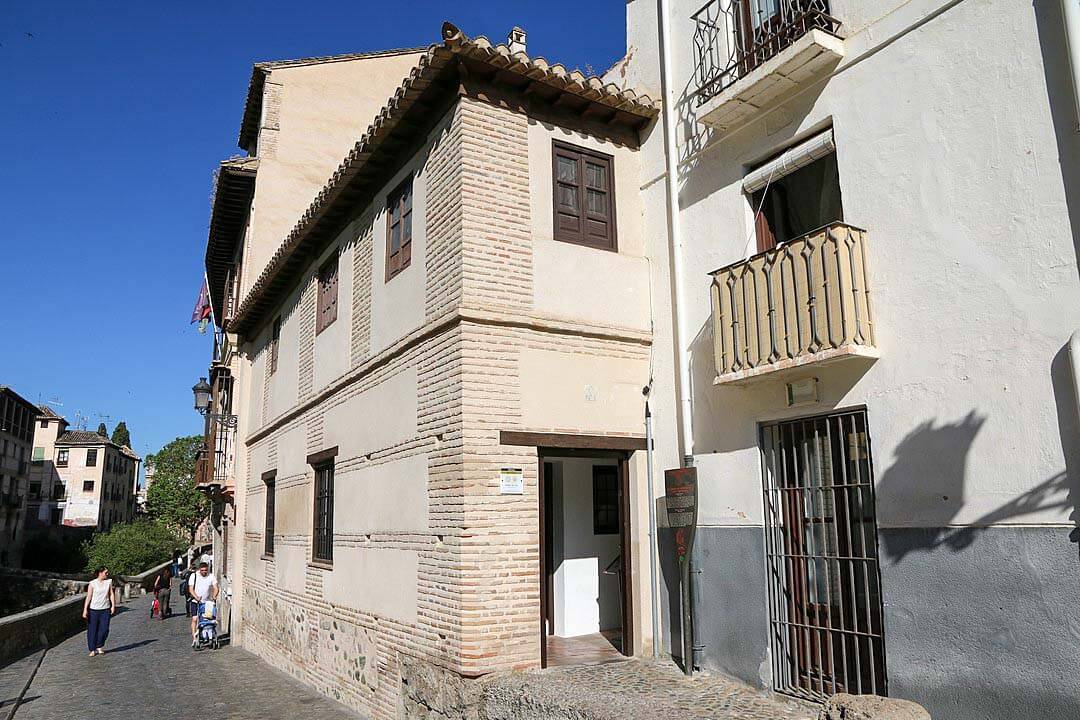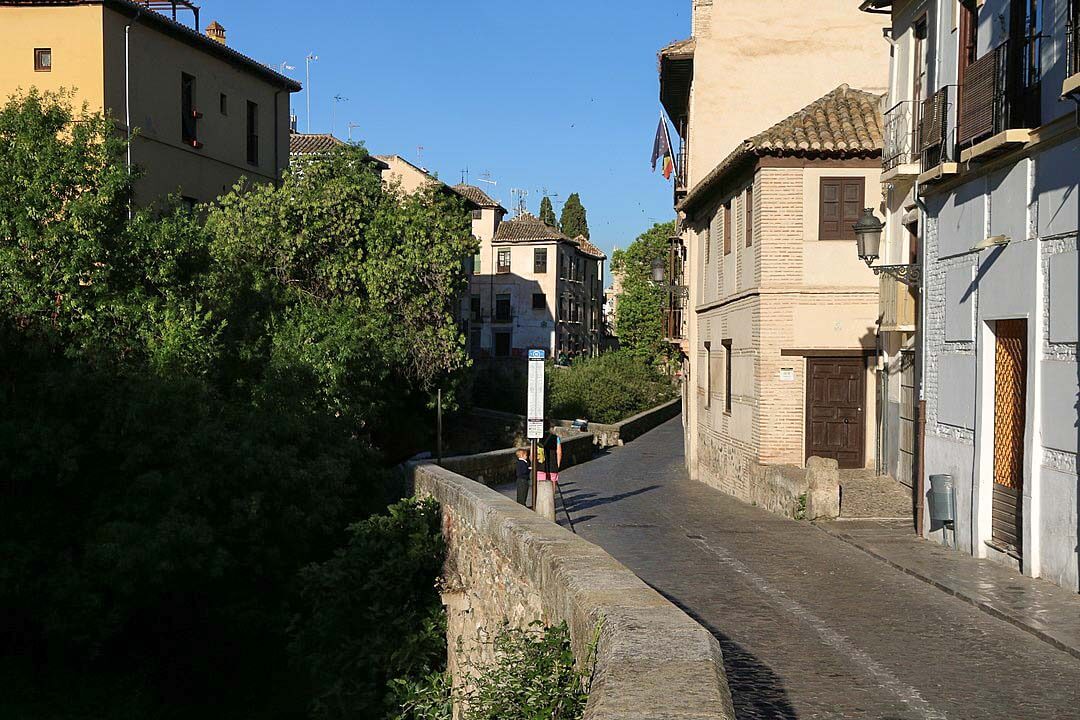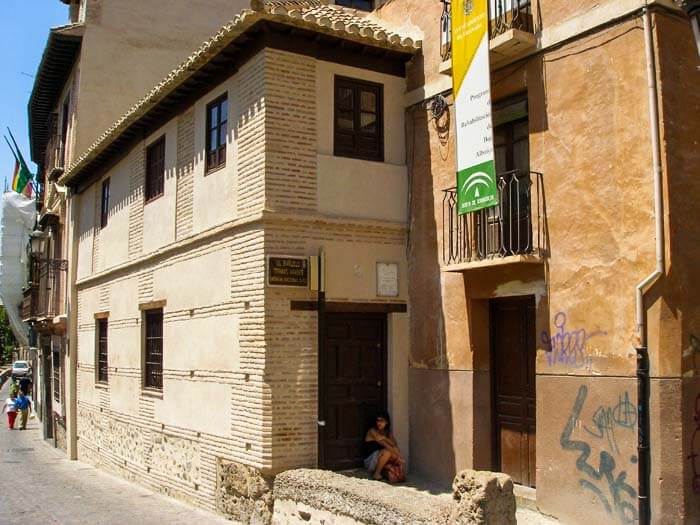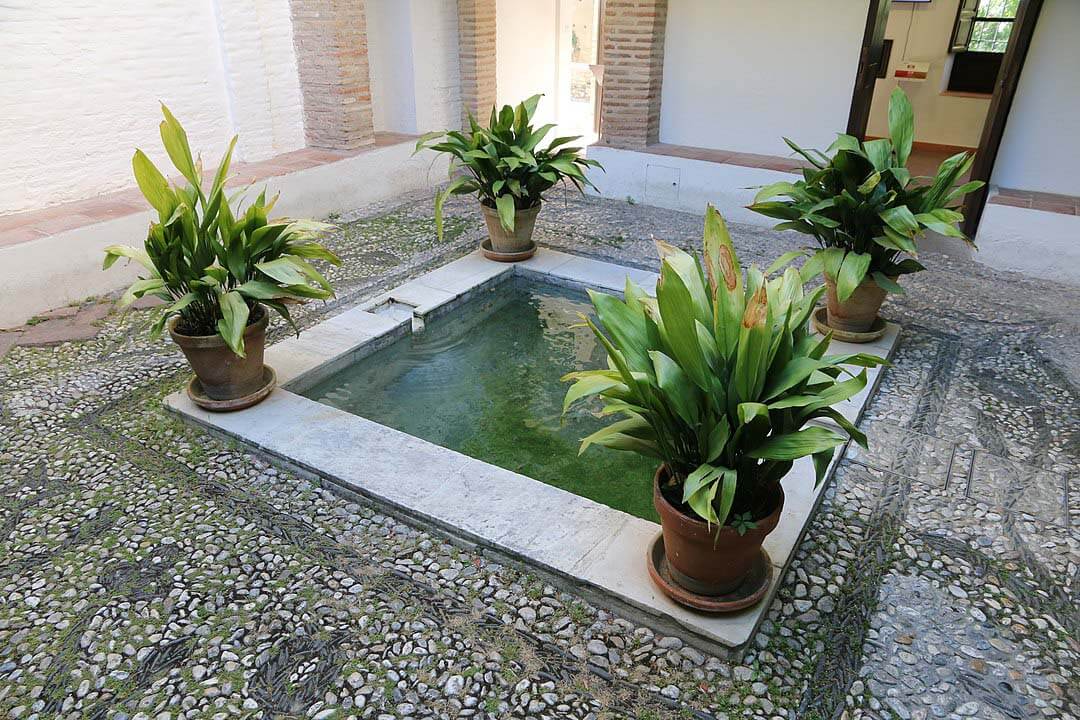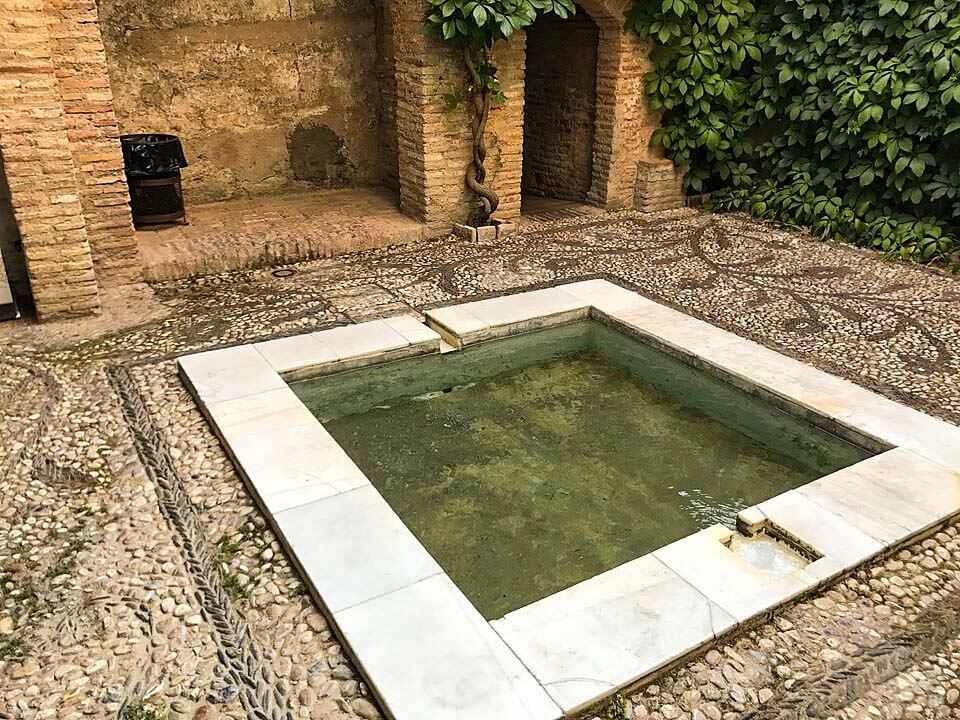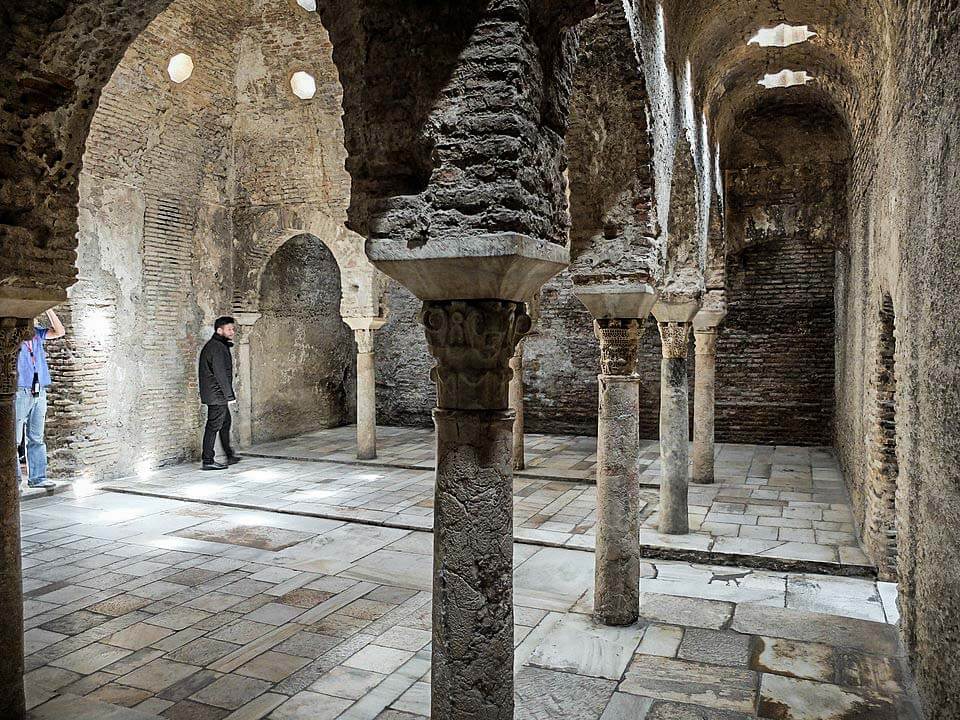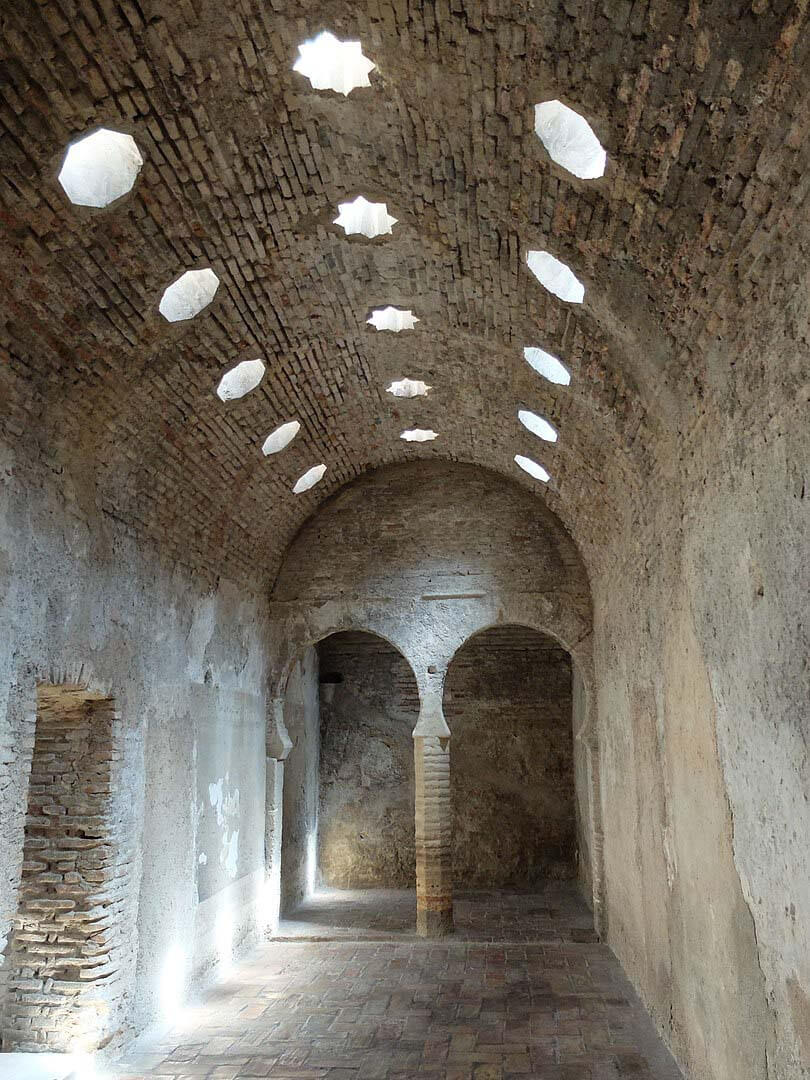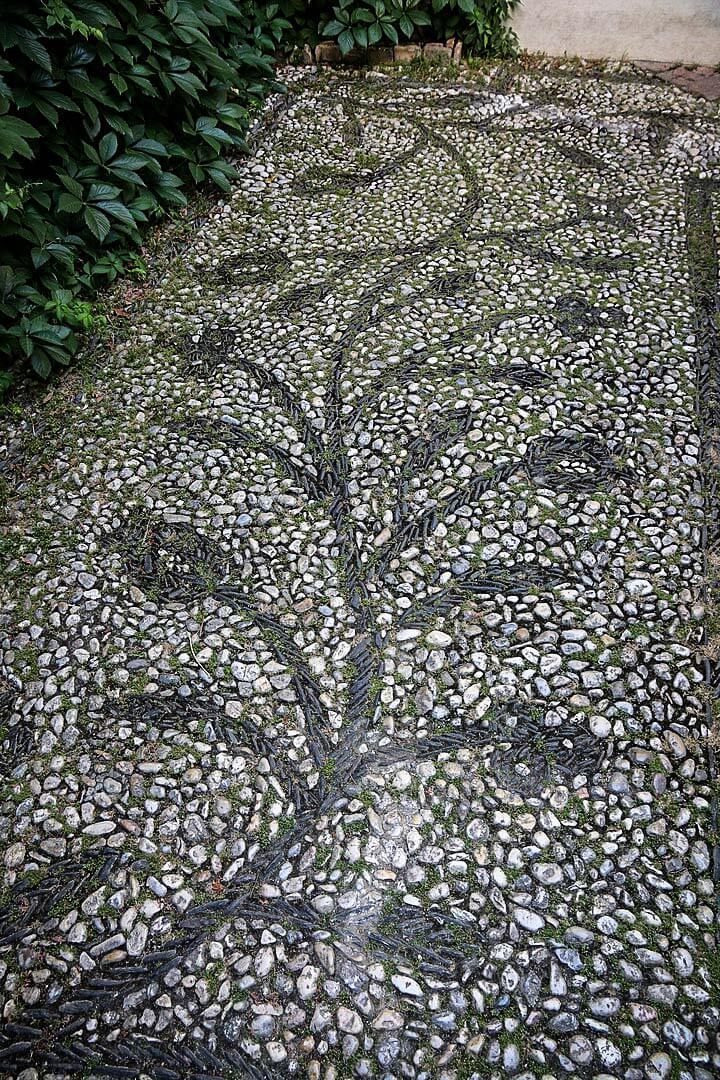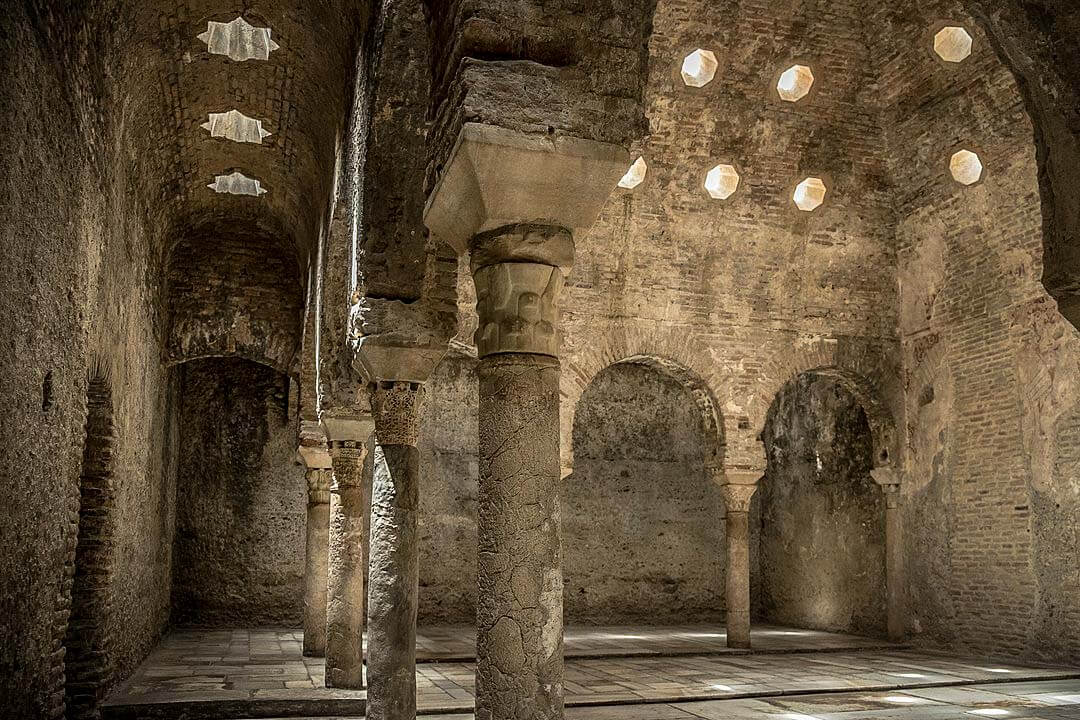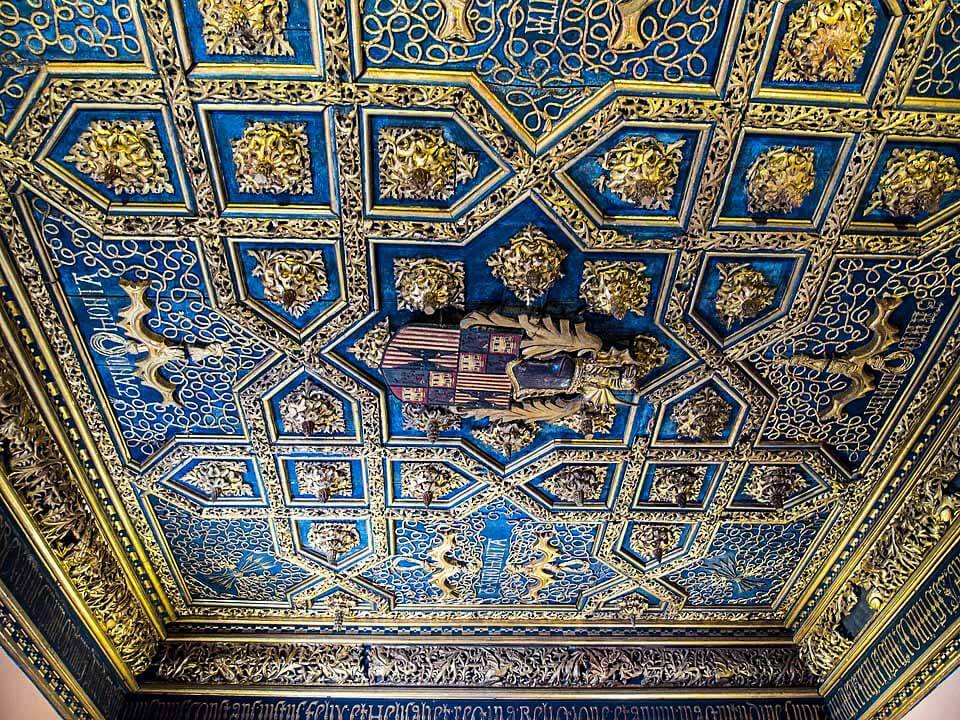Granada, Spain
Coordinates: 37.178340, -3.592886
The Bañuelo or El Bañuelo, also known as the Baño del Nogal (“Bath of the Walnut”) or Hammam al-Yawza, is a preserved historic hammam (Islamic bathhouse) in Granada, Spain.
It is located in the Albaicin quarter of the city, on the banks of the Darro River. It was used as a bathhouse up until the 16th century at least, before becoming defunct and being converted to other uses.
In the 20th century it underwent numerous restorations by Spanish experts and is now open as a tourist attraction.
It consists of three halls, and you access the bath from a small courtyard luxuriant in vegetation.
The ceilings have holes (some of them in the form of a star) to let in some daylight, but not too much.
It is a rare survival from the Muslims era, and had fallen into disrepair, because of the deliberate elimination by the Catholic Monarchs of what they saw as Muslim culture.
It was restored in the early 20th century and makes a pleasant visit.
Hammam
Bathhouses (hammams) of this type were a common feature of Muslim cities across the Muslim world, serving both a social and religious purpose.
They assisted Muslims in the performance of ablutions, especially the full-body ablutions or ghusl, which were required for certain situations.
They also served the general purpose of hygiene as well as being a place for socialization.
Their layout and function was modeled on the Roman bathhouses which preceded them and which had already been part of urban life in the region for generations.
History
About a dozen historic remains of Islamic bathhouses (hammams) have been found in Granada.
The Bañuelo hammam is traditionally dated to the time of the Zirids (a Taifa kingdom based in Granada) in the 11th century, during the reign of Badis or Abdallah.
A recent study has suggested that the building dates from the 12th century, based on the style of its masonry.
The baths would have been located inside the al-Qasaba al-Qadima or Old Alcazaba, the former royal citadel located over what later became the Albaicin, before the Alhambra became the seat of power.
After the fall of Granada to Spanish Catholic in 1492, at the end of the Reconquista, the bathhouse continued to be repaired and maintained during the 16th century as it continued to be used by the city’s morisco population
Morisco were former Muslims and their descendants whom the Roman Catholic church and the Spanish Crown obliged, under threat of death, to convert to Christianity or self-exile after Spain outlawed the open practice of Islam by its sizeable Muslim population (termed mudéjar) in the early 16th century.
In later centuries the baths ceased their original function and were used as a public laundry facility and later as a dwelling (a later residential structure was built over a part of the structure, fronting the street).


